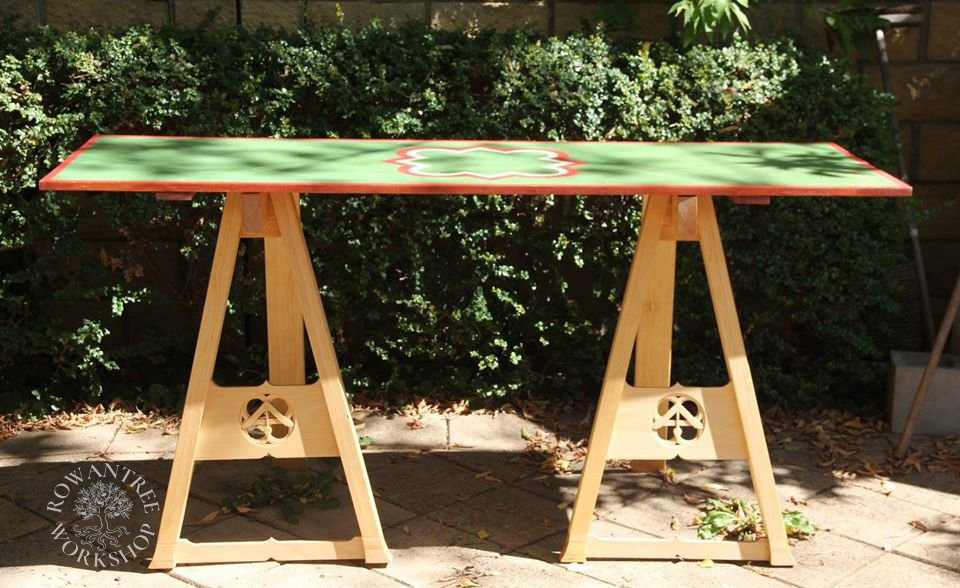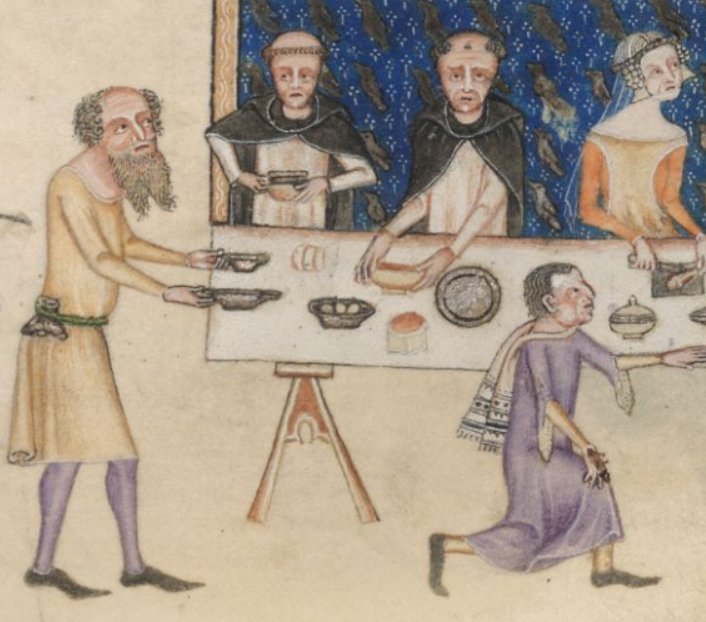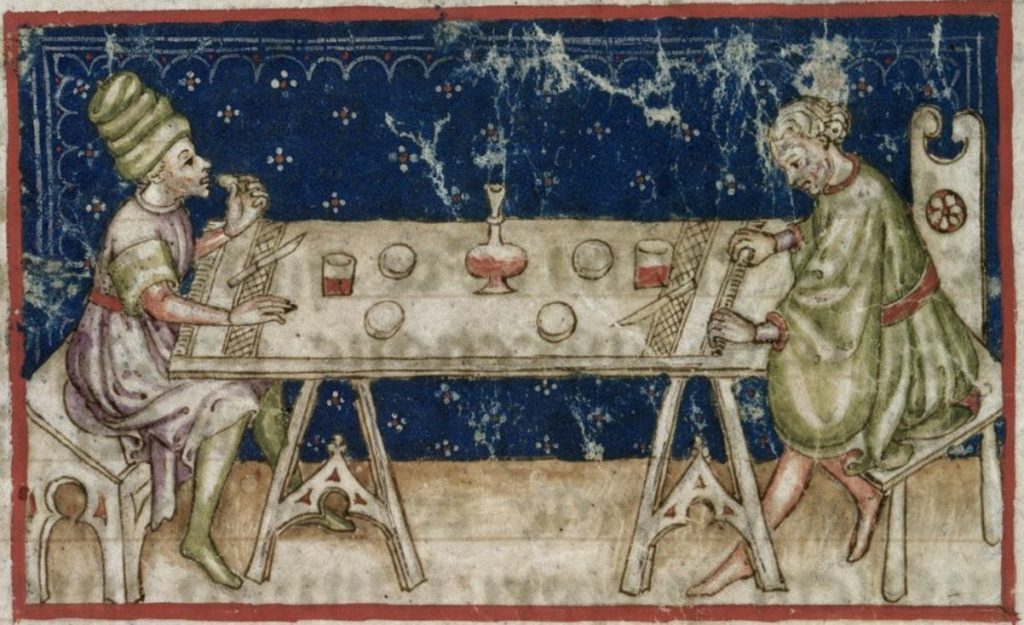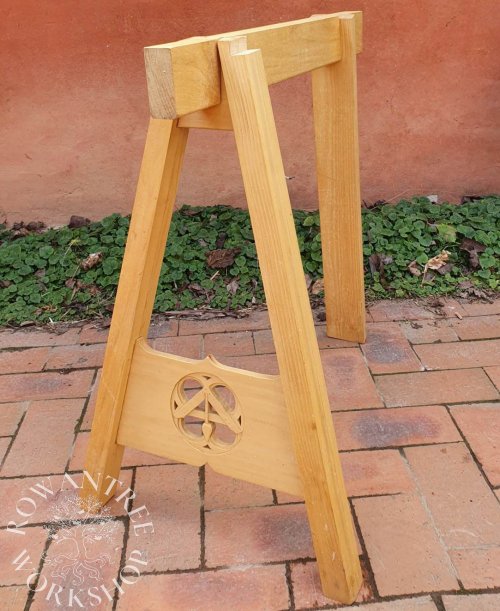A set of carved trestles, to support our painted trestle tables.
In 2009, we made a pair of 15th century painted tables, supported by simple ‘temporary’ trestles. 10 years later, they finally got an upgrade…..

Research and Design
Trestles came in many forms, with both three and four legs. When diners sat on one side of the table, the single leg went at the back and the double leg (an A or inverted V shape) went to the front,

Source: British Library MS 42130 f.208 (unavailable due to BL cyberattack)

Source: Bibliothèque Nationale de France Fr.8266, f.5
In Medieval & Renaissance Interiors, Oledzka (2016) notes that the front part of the trestle was the only surface visible to the onlooker, and so it was often fashionably decorated.
Medieval and renaissance manuscripts often show trestle fronts decorated with decorative carving and/or painting, some with heraldic shields.

Construction
The medieval trestles were solid pieces of furniture, but ours needed to pack flat for storage and transport. The previous version broke down to 4 pieces, but was not stable enough, especially on uneven ground. This version breaks down to 3 pieces – the front A, top and back leg.


My husband made the trestles using power tools for cutting and shaping. They were finished with hand tools, then sanded and oiled. The trestles carvings have several designs, featuring elements from our heraldic devices. The example above is the device of our household Atelier.
We have a total of 8 trestles – 6 for the dining tables and 2 for the side table.
- Two of the trestles (the images above) have pieces cut out the the A frame, so they can slot into the table frame, supporting the hinge section.
- Two of the trestles (shown at the top of the page) were made taller, to hold a table for service. Since this was an afterthought, they have an extra stringer along the base.
Afterthought
These trestles were made of pine to reduce weight, but are quite chunky – I think they could be made less bulky and still work well.

